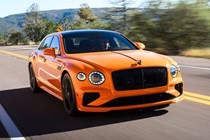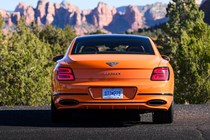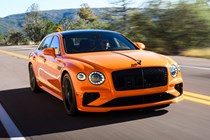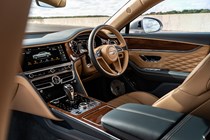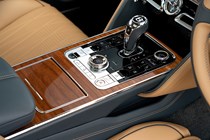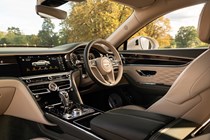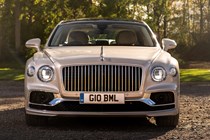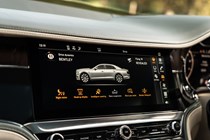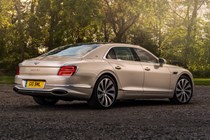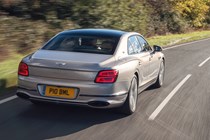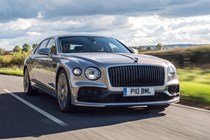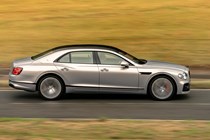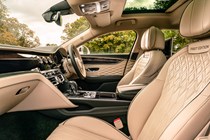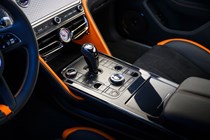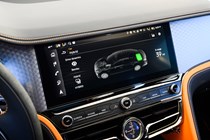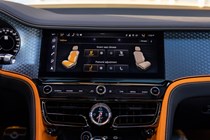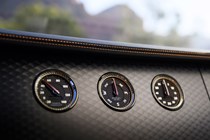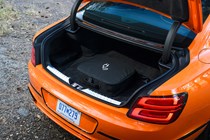Bentley Flying Spur engines, drive and performance
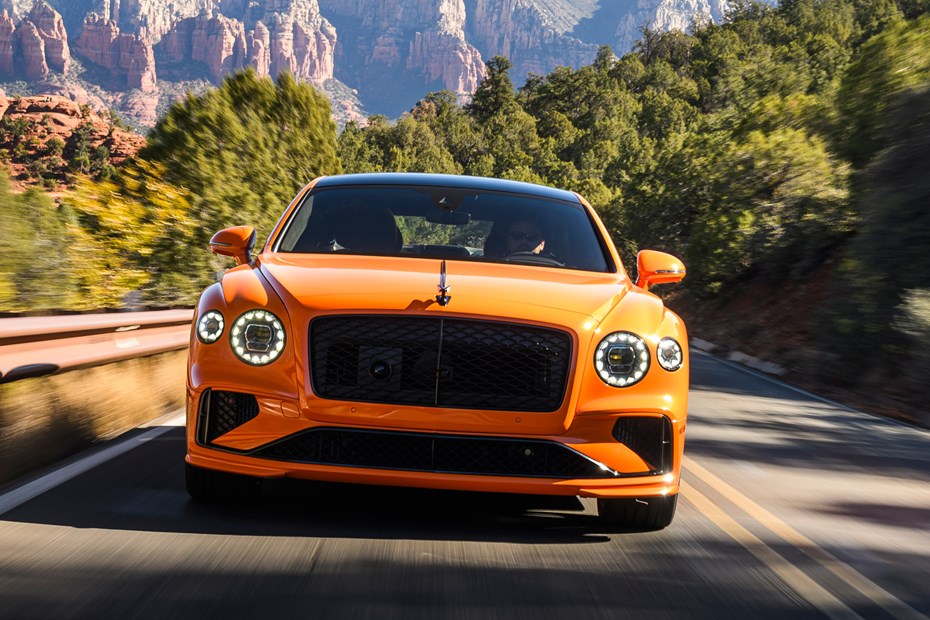
- Engine range is now V8 plug-in hybrid only
- But it’s also the most powerful Flying Spur ever
- Plus you can drive on electric power alone
Hybrid engine
As of the 2024 update, the only engine available in the Bentley Flying Spur is a plug-in hybrid. Labelled the Bentley Ultra Performance Hybrid system this combines a 4.0-litre twin-turbo V8 with an electric motor that’s packed into the eight-speed dual-clutch automatic transmission.
The V8 was co-developed with Porsche and produces 600hp and 800Nm of torque (pulling power) on its own. The electric motor is rated at 190hp and 450Nm. Maximum combined output is 782hp and 1,000Nm. This is an exceptionally powerful car – in fact the most powerful four-door model Bentley has ever produced.
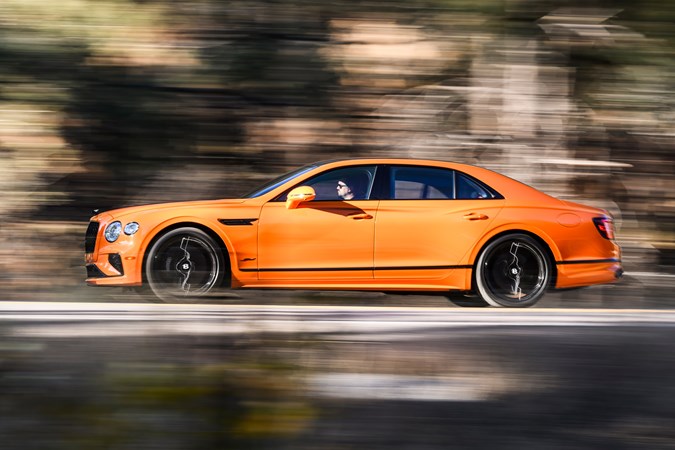
A bit of simple maths will tell you that the individual figures are higher than the combined figures – especially when it comes to torque. This is an indication of the degree of flexibility this powertrain now offers. The V8 is arguably less sophisticated than the one it replaces, having only single-scroll turbos and no cylinder deactivation capability, but the addition of the electric motor more than makes up for this. For instance, there’s no longer any reason to shut down just half the cylinders to save fuel when you can turn off the entire engine instead.
It’s a fabulously cultured sounding creation when given the full right foot in the Sport driving mode, like a regular V8 gargling syrup. In which context it can get from 0-62mph in just 3.5 seconds. But it offers an equally appealing silence and sophistication when travelling on electric power alone. Something the Flying Spur can do for up to 47 miles at a time, 87mph and 75% accelerator application.
What’s it like to drive?
- Surprisingly agile for a 2.7-tonne car
- Lots of grip and excellent roadholding
- All-wheel drive, all-wheel steering, air suspension
Bentley is a sporting brand. So although this is clearly a car in which to enjoy being driven, with fantastic comfort in the back seats, it also offers immense satisfaction to those who choose to drive themselves.
For the 2024 update, Bentley has taken this step further forward by updating the suspension – as well introducing that hugely powerful new engine and electric motor combo. Not only does it now feature new two-chamber air springs, these are teamed with new dual-valve dampers, described by Bentley as the Flying Spur’s ‘secret weapon’.
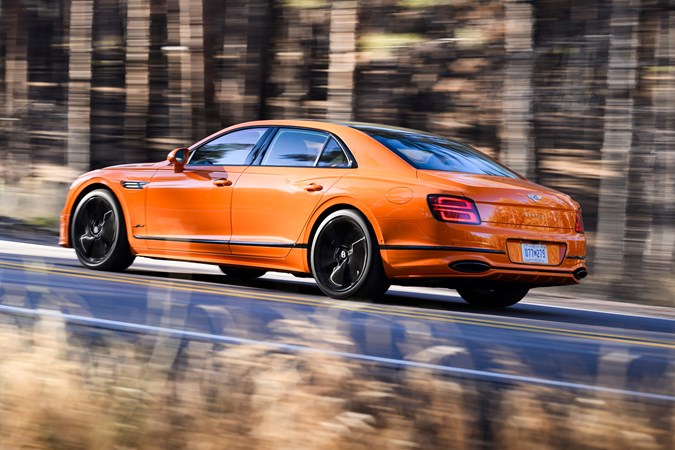
This is because the dampers can control how much they compress and how much they rebound completely independently. Which has allowed Bentley to make the Flying Spur more cossetting in its Comfort setting – and ride comfort was a previous weak point of this model – without compromising the degree of body control available in Sport.
Supporting tech includes active all-wheel drive, all-wheel steering, an electronically controlled limited slip differential (eLSD), torque vectoring, and 48v active anti-roll bars. This last feature can not only resist lean in the turns, it can entirely decouple opposite sides of the car to reduce jostling on bumpy roads.
So while the Flying Spur doesn’t have the latest ‘active ride’ technology available in some Porsches now – which can counter-lean and resist pitching under hard braking and acceleration – it does a remarkable job of making nearly 2.7 tonnes of 5.3m-long automobile feel both nimble and luxurious.
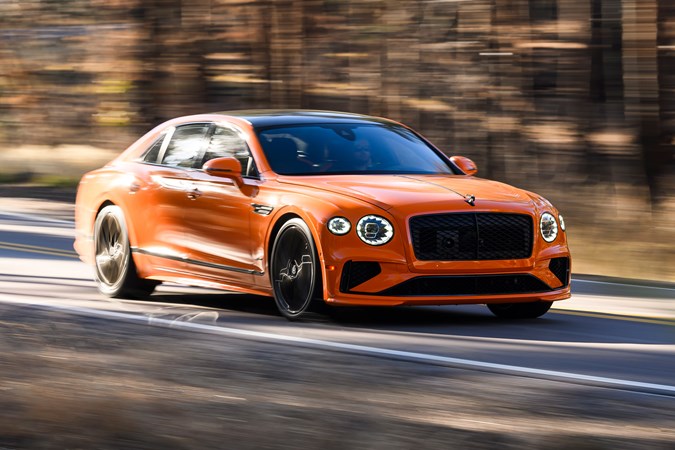
This is an exceptional way to cover vast distances. Long stretches on uninspiring motorway disappear beneath the wheels with barely a murmur in the Comfort driving mode, but the whole car comes alive in Sport as soon as any interesting corners appear. This has a corresponding impact on the ride, so if you don’t want to bother with chopping and changing, the intermediate Bentley mode is beautifully judged. Just taught enough, without ever becoming uncouth.


